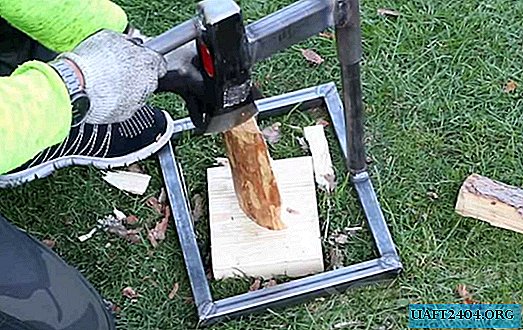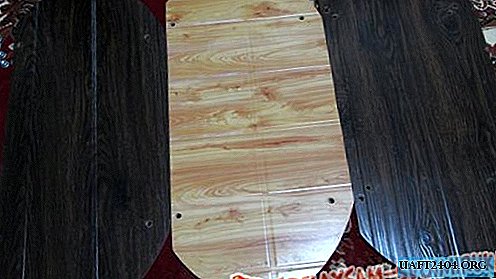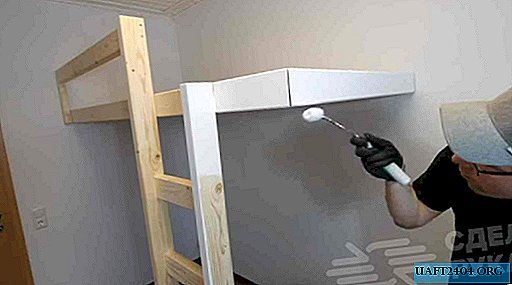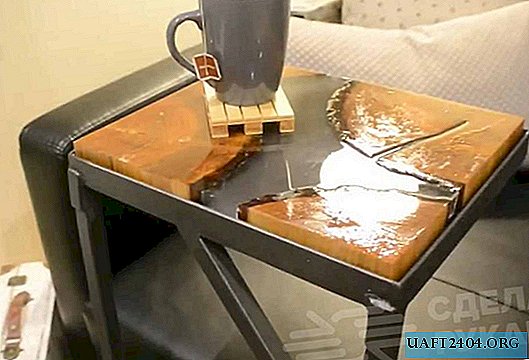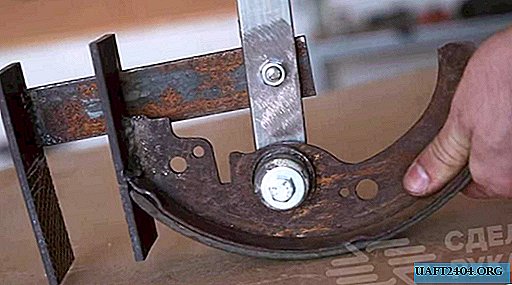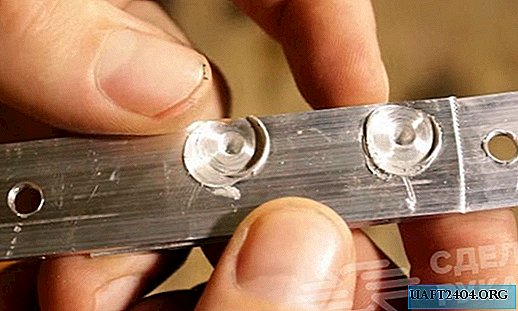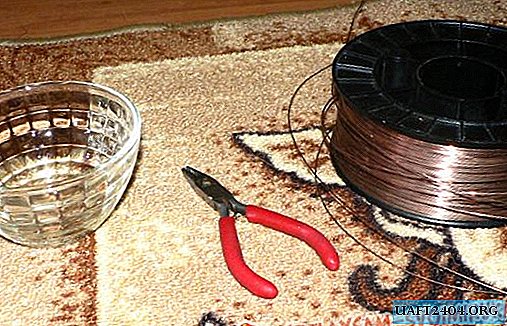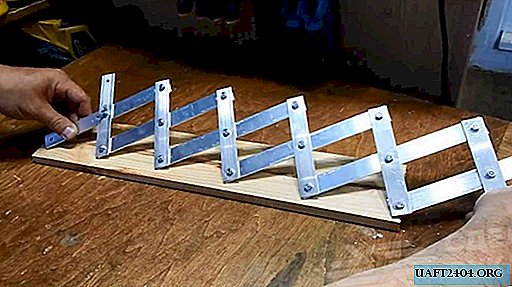Share
Pin
Tweet
Send
Share
Send
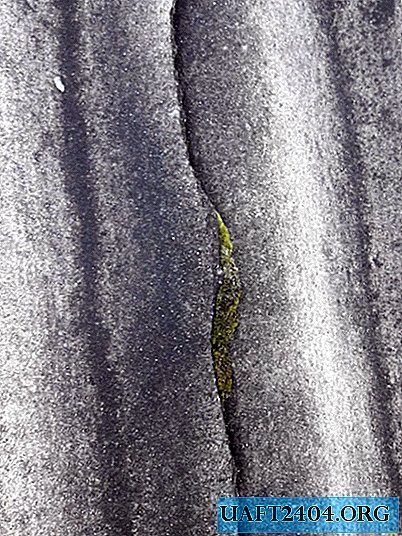
Observing these simple steps, you will significantly extend the life of this coating. However, sooner or later, cracks in the slate will still appear. And here I want to advise one of the ways to eliminate a crack, or a small hole in a slate sheet, if there is no way to replace it.
Will need
- Gasoline (I used the AI-92 brand).
- Styrofoam.
- Fine nylon mesh (fiberglass can).
- Brush.
- Scissors.
- Solvent.
- Rag.
- Hard brush.

Cooking glue
First, prepare our homemade glue, not forgetting the precautions; make sure that there is no open fire nearby, because we will work with gasoline! And try not to inhale gasoline vapors - this may affect your well-being not for the better!
The work will be more convenient, in my opinion, if the glue is in some dishes, with a wide neck, like a plastic bucket of mayonnaise. So, pour two hundred and fifty milligrams of gasoline into the measuring cup (the higher its octane number, the easier and faster the foam will dissolve in it) and pour it into a bucket.

I used 92nd gasoline, but since it was rather stale (I poured it from an old motorcycle), and I was probably exhausted, I had to splash on it another fifty milligrams of brand 646 solvent.

If you use fresh gasoline 92nd or 95th, pouring solvent into it is not necessary - it already copes with polystyrene perfectly. Now we break the foam into pieces of suitable size, and send it into a bucket of gasoline. The foam dissolves there almost instantly, effectively hissing and bubbling.

We continue to dissolve the pieces of polystyrene foam until the resulting glue acquires a gray consistency, similar to organic wallpaper glue; the same viscous and thick enough to stay on the brush and, later, on the nylon mesh.

Next, put everything you need into a package; a bucket with freshly prepared glue, a nylon mesh, scissors, a brush, a solvent, a rag and we climb onto the roof, to the damaged place on the slate, not forgetting, again, safety precautions.

We repair slate
Now it is necessary to clean the place of gluing (fields, centimeters five from the edges of the crack) with a hard brush, from debris, dust and sand. Next, moisten the cloth with solvent and wipe the brush-cleaned places where the glue will lie.

On the processed edges of the crack, apply a layer of glue with a brush.

We lay on a crack with glued edges a nylon mesh. From above we cover all this with glue.

Now you need to wait two to three hours for the glue to dry out a little. And to catch your breath during this time from gasoline vapors! After the indicated time, we rise back, apply a fresh layer of glue to the slightly dried up glue and lay a second layer of mesh to fix the result, so to speak. And now on top again, thoroughly, and not sparing the glue, apply the last layer of glue. The polystyrene dissolved in gasoline will tightly cling to the slate, so that no bad weather will tear it off and wash it off! You can, if you wish, until it starts to dry out, sprinkle the whole thing on top with dry cement so that the repaired area of the roof is not conspicuous if it is in a conspicuous place. On this our work is over. The rest is a matter of time. Seven to nine hours will be enough for weathering the vapor of gasoline from the glue and its further hardening. Do not forget before starting work to find out the weather forecast for the next day, since excess moisture will obviously not benefit such work. Such repairs will extend the life of the slate by at least another couple of years. Well, or until the opportunity arises to change the old coating to a new one.
Share
Pin
Tweet
Send
Share
Send

